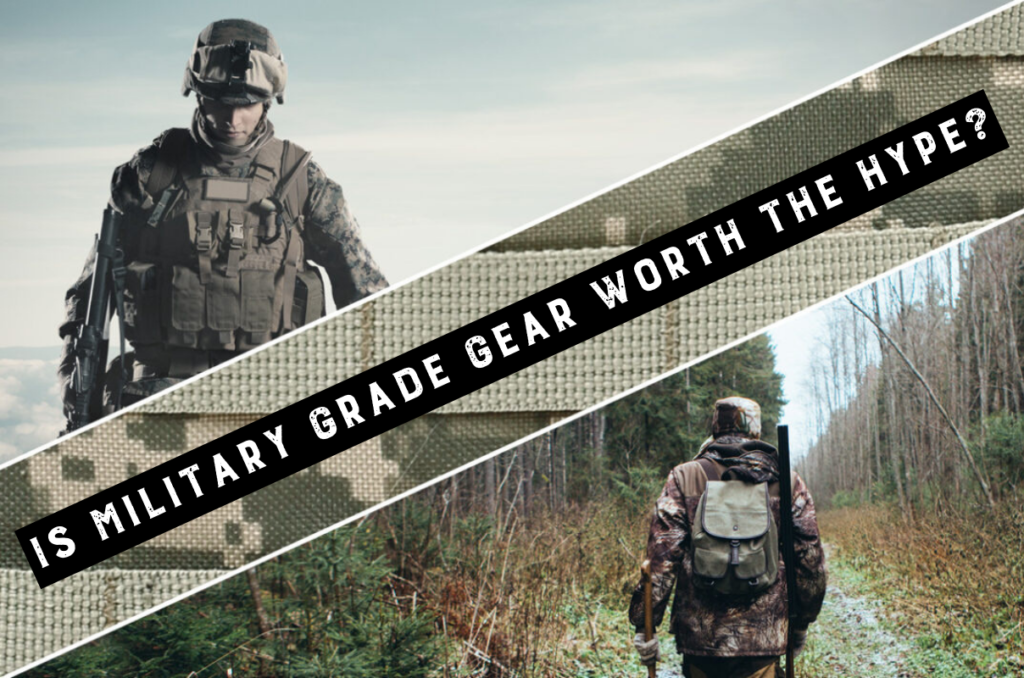Uncategorized
Why Military Grade is Another Way to Say Stuff You Don’t Need
Advertisers often use the term “military grade” to suggest reliability and desirability, but this view may not be shared by military personnel, troops, and veterans. Consumers who regard MOLLE, picatinny rails, and profuse camouflage as tacticool accessories rather than functional products may not have had the same frustrations with being issued gear that did not hold up to its original promise in the field.
But Military Grade = Tough Gear, Right?
The average citizen most often believes that the military branches contain a bunch of tough people. It would follow logic then, that the term “military grade” would be given to products and materials that are equally as rugged. Additionally, many civilians may believe that a “military grade” product must be durable or field tested. In contrast, troops and veterans believe that the military frequently grants contracts to the lowest bidder and therefore is often neither durable nor efficient. Something that is “military grade” is garbage to individuals who have been provided gear only to have it come apart after the most mundane uses.

According to Michael Levine, director of North American product relations for Ford Motor Company, the metal used to create F-150s is “high-strength, military grade aluminum alloy”. The term “military grade” refers to the specifications that 6,000 series alloy is also used to build Bradley Fighting Vehicles and Humvees. However, another use for aluminum in the armed forces could also be the dining trays- that could also allow a company to market their product as being “military grade”.

Additionally, Humvees, with all of their positive attributes, have some negative ones as well. These military vehicles were found to be exceedingly vulnerable to explosions from underneath, making them particularly dangerous in the early days of the Global War on Terror, when improvised explosive devices (IEDs) were being used heavily in Iraq and Afghanistan. In reality, even with increased armor, the Humvee “remained a deathtrap in the event of an anti-tank mine detonation,” according to a 1994 assessment issued throughout the Army and Marine Corps.
Nonetheless, troops and veterans, unlike the average citizen, are well aware that “military grade” does not always imply that the product will be reliable or that it even caters to a good design.
Military Grade History Doesn’t Promote the Allure it Intends
‘Military Grade’ has since often become synonymous with products that were adopted because they were up to the minimum of military standards, but the most cheaply made to veterans.
There’s a lot of truth in that statement. Until 1984, the Defense Department granted the majority of contracts to the lowest-bidders. The Competition in Contracting Act (CICA) was passed into law in 1984 as a foundation for the Federal Acquisition Regulation (FAR) and to foster competition and reduce costs. The theory was that more competition for procurements would reduce costs and allow more small businesses to win Federal Government contracts. It also was hopeful that with more options, the military would have better quality goods to choose from and that it wouldn’t be a tradeoff for the bare minimum at the lowest cost type of a situation.
Trying to Obtain Balance for Equipment
Just take some of the classic camouflage uniform fails for instance, there are two in particular that stand out: the Navy’s Type 1 working uniform and the Army’s Universal Camo pattern. The Navy’s Camo makes a perfect storm if a sailor were to go overboard, they would blend in exquisitely with the water and the Army’s Camo actually does the opposite of what it is supposed to do by making wearers stand out.
Despite contracting reforms, the Pentagon continues to fail, even in the case of big-ticket items, including the Littoral Combat Ships, which may go down in history as the most expensive artificial reefs ever built, and the F-35 Joint Strike Fighter, which could cost taxpayers $1.7 trillion in total.
Given the stark differences between civilian and military life, advertisers are likely to continue banking on describing their products as “military grade” to boost sales, while service members and veterans will continue to shake their heads and laugh at one of the biggest inside jokes civilians don’t get.
Enjoy reading this post? Check out our latest and greatest HERE
Want to check out some great jobs you can get if you have your NCATT AET? Click HERE

